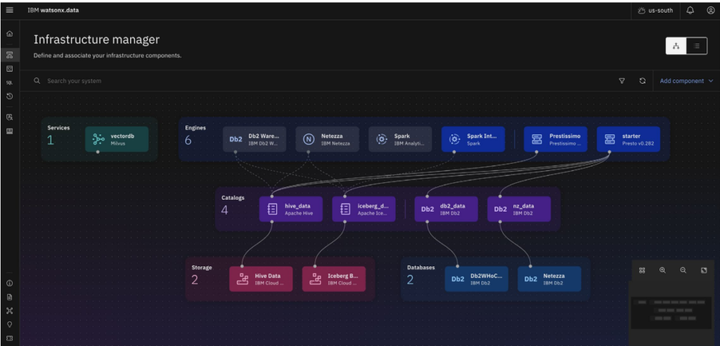How Agentic AI Will Transform Enterprise Decision-Making in 2025

Charting the Path to Autonomous Intelligence: The Why Behind Agentic AI
Enterprise leaders around the globe face a rapidly changing landscape, with artificial intelligence (AI) evolving from simple automation tools to sophisticated, autonomous systems capable of making decisions on behalf of humans. Today’s decision-makers want to know how they can remain competitive, harness the power of AI ethically, and ensure that the technology supports rather than supplants their workforce. Yet, integrating these emerging AI capabilities can feel daunting—leaders may question whether they are moving too fast, too slowly, or simply misaligning their AI investments.
This tension sparks an internal sense of urgency. There is the desire (“The Want”) to capitalize on AI for efficiency, cost-saving, and business growth. However, there is also a growing awareness (“The Problem”) that organizations lack a strategic plan for agentic AI risk obsolescence. This puts leaders in a position of uncertainty (“The Internal Problem”), concerned that they might be left behind if they fail to navigate AI’s rapid advancements.
We understand these challenges and the complexity that comes with implementing AI systems that can autonomously learn, adapt, and act. Having delved into emerging trends, major technology players’ strategies, and real-world results, we’re here to guide you. In this blog post, we bring together the latest data and insights on “agentic AI” and how it is predicted to reshape enterprises by 2025. You’ll gain clarity on the technology’s potential, the pitfalls, and how top organizations like IBM, Google, Amazon, OpenAI, and Microsoft are paving the way.
1. The Autonomy Horizon: Key Challenges Facing Enterprise Leaders
Agentic AI—advanced AI systems that operate with autonomy, adaptability, and goal-oriented behavior—promises unprecedented operational efficiencies and strategic decision-making capabilities. According to multiple industry reports, these autonomous agents are expected to become increasingly central to day-to-day work, from logistics to customer service. Yet, with every promise comes a set of challenges that enterprise leaders must address head-on.
1.1 Managing Rapid Technological Change
By 2028, 15% of day-to-day work decisions will be autonomously executed by agentic AI systems, a substantial jump from 0% in 2024 [1]. Adapting organizational processes, reskilling workers, and aligning AI-driven decisions with business goals can be overwhelming in such a short timeframe. Enterprise software is similarly in flux: 33% of enterprise software applications are expected to incorporate agentic AI by 2028, up from less than 1% in 2024 [2]. This accelerated technology cycle can strain leadership teams that must quickly assess new solutions, pilot them responsibly, and integrate them into their broader digital ecosystems.
1.2 Ethical and Governance Concerns
Agentic AI introduces significant ethical considerations. If an AI agent autonomously decides on resource allocation, hiring, or customer interactions, who is ultimately accountable? Industry experts emphasize the importance of robust governance frameworks that hold AI-driven processes to the same moral and regulatory standards as traditional human-led operations [3]. Additionally, data bias and transparency remain critical issues. Misaligned training data can lead to discriminatory outcomes, and black-box AI models can obscure how decisions are made—factors that can weaken stakeholder trust if not carefully managed [4].
1.3 Cybersecurity Threats
As AI gains more autonomy, it also becomes a high-profile target for malicious actors [5]. AI-driven systems can be manipulated to make erroneous decisions, sabotage supply chains, or even carry out financial fraud. In addition, the rise of “shadow AI,” or unauthorized AI adoption by employees, can occur in parallel, further complicating an organization’s security posture. High-stakes environments like healthcare or the military face even greater risks if agentic AI is compromised [6].
1.4 Workforce Disruption
Agentic AI can automate complex tasks, potentially displacing certain job roles. According to one insight, 41% of employee time is currently spent on repetitive, low-impact work—work that agentic AI is expected to take over in the near future [7]. This transformation may free employees to focus on higher-value tasks, but it also necessitates workforce retraining and a broader cultural acceptance of AI as a collaborative rather than a competitive force.
1.5 Regulatory Lag
The rapid development of agentic AI often outpaces existing legal frameworks. As we edge closer to 2025, organizations face a patchwork of evolving AI regulations across different regions. Compliance complexities can stall innovation. Forward-thinking enterprises must navigate these uncharted regulatory waters proactively, or they risk facing fines, legal challenges, or public backlash [8].
2. The Power Shift: Strategic Insights for Agentic AI Adoption
Despite these challenges, the trajectory for agentic AI is clear. Reports from reputable technology analysts illustrate that organizations adopting agentic AI early can significantly outperform slower-moving competitors. Below are key strategic insights to guide leaders.
2.1 Exponential Growth in AI Investments
Global IT spending is predicted to reach $5.74 trillion in 2025, with a large portion earmarked for AI-driven technologies [9]. The demand for agentic AI is fueled by the drive for better decision-making, operational efficiency, and the potential for innovation. Enterprises that proactively integrate agentic AI can seize market opportunities quickly, securing a stronger competitive edge.
2.2 Efficiency and ROI Gains
Organizations are seeing tangible benefits from AI autonomy. Agentic AI systems can adapt in real-time, adjusting shipping routes or inventory strategies based on predicted disruptions [10]. Such real-time adaptability not only improves cost efficiency but also minimizes human error. In the financial sector, agentic AI can autonomously predict market trends and execute trades, showcasing the technology’s potential for significant ROI [11]. Across industries, these results reinforce that AI autonomy is more than buzz—it is a measurable path to higher profits and faster growth.
2.3 The Shift to Smaller, Multimodal Language Models
Technological advancements such as smaller language models with larger context windows are expected to drive adoption of agentic AI [12]. By processing text, images, and even speech, AI agents can generate more context-aware insights and perform tasks with greater accuracy. Google’s Gemini 2.0, for instance, is built around this multimodal concept, targeting text, images, and speech simultaneously [13]. This shift lowers computational overhead while increasing precision, making advanced AI accessible to a wider range of businesses.
2.4 The Imperative for Robust Governance
Because agentic AI systems operate with minimal human oversight, robust governance is non-negotiable. Experts urge leaders to implement strict monitoring, auditing, and compliance checks [14]. Accountability, transparency, and fairness are central tenets, preventing misuse or unintended biases. In parallel, real-time monitoring of AI decisions can detect anomalies or potential security breaches before they escalate [15].
2.5 Integration and Change Management
As agentic AI integrates into core business processes, employees need upskilling to collaborate effectively with AI systems. This integration demands an organizational shift—data must be more available, and cross-functional teams should learn to interpret AI-driven insights. Fostering a culture that encourages experimentation and continuous improvement is also critical [16].
3. The Vanguard: Approaches by IBM, Google, Amazon, OpenAI, and Microsoft
In understanding how agentic AI will evolve by 2025, it is instructive to look at the giants who are shaping this landscape. IBM, Google, Amazon, OpenAI, and Microsoft each offer unique roadmaps, investments, and strategies.
3.1 IBM: Building Accountability into AI
IBM’s vision for agentic AI emphasizes robust governance and regulatory compliance [17]. Their approach hinges on embedding transparency and explainability into AI workflows to maintain stakeholder trust. IBM’s stance involves actively shaping industry standards to ensure agentic AI aligns with ethical guidelines. They also focus on AI literacy for employees, underscoring the importance of a well-prepared workforce.
3.2 Google: A Focus on Multimodal Intelligence
Google’s approach is defined by its Gemini AI model—capable of processing multiple data types and even interacting with external applications in real time [18]. Already, Google aims to embed AI agents across enterprise applications, harnessing natural language processing (NLP), vision, and other modalities for real-time decision-making. The tech giant also prioritizes ethical considerations, aiming to address global challenges such as climate change. Additionally, Google’s strategic partnerships and scale-up efforts target reaching 500 million Gemini users by 2025 [19].
3.3 Amazon: Transforming Alexa Through Agentic AI
Amazon’s strategic partnership with Anthropic—the AI lab behind Claude AI—marks its pivot to agentic AI [20]. By infusing Alexa with more autonomous capabilities, the company seeks to deliver proactive, personalized user experiences. However, Amazon faces hurdles: delayed responses and execution challenges highlight the complexity of retrofitting an existing AI assistant with agentic capabilities [21]. The multi-billion-dollar investment in Anthropic signals Amazon’s commitment to remain competitive against Google Assistant and Apple’s Siri. Amazon is also doubling down on security frameworks, deploying Zero Trust strategies and AI-driven threat detection to safeguard agentic AI processes [22].
3.4 OpenAI: The Quest for AGI and “Operator”
OpenAI’s future revolves around developing agentic AI systems that move closer to artificial general intelligence (AGI) [23]. Their planned AI agent, code-named “Operator,” is set to launch in January 2025, with the potential to autonomously manage tasks for both consumers and enterprises [24]. By collaborating with Microsoft to integrate Copilot agents into broader productivity tools, OpenAI envisions a future where these agents can handle multifaceted workflows that traditionally require significant human oversight. This raises new questions about employment shifts and the ethical frameworks needed to manage AI with a high degree of autonomy [25].
3.5 Microsoft: Democratizing AI Through Copilot Studio
Microsoft is differentiating itself by championing human-in-the-loop AI. Their Copilot Studio aims to make AI development accessible with low- or no-code tools [26]. Alongside a projected $80 billion investment in AI infrastructure by 2025, Microsoft’s emphasis on “human-at-the-helm” ensures that while AI can handle tasks autonomously, human oversight remains central [27]. This dual approach protects against unintended consequences and fosters trust, both internally and among Microsoft’s extensive enterprise client base.
4. Real-World Partnerships and Milestones
Unlike traditional short-term AI pilots, major tech players are forging multi-year deals to scale agentic AI solutions:
- Microsoft and the UK Government: Microsoft signed a multi-year agreement with the UK government, presumably enabling the public sector to integrate AI agents into service delivery, cybersecurity, and administrative functions [28].
- Amazon and Anthropic: Amazon’s multi-billion-dollar stake in Anthropic aims to accelerate the integration of advanced AI models into Alexa for next-level user interactivity [20].
- Google’s Partnerships: Google is collaborating with various enterprise software vendors to embed Gemini’s multimodal intelligence in business operations—enhancing both speed and accuracy of complex workflows [19].
These alliances underline the massive capital and collaborative efforts fueling agentic AI expansion.
5. Action Steps: Harnessing Agentic AI for Enterprise Success
Agentic AI presents both significant opportunities and notable risks. Organizations preparing for 2025 and beyond should adopt a structured, pragmatic approach to ensure successful implementation.
5.1 Immediate Priorities (0-12 Months)
- Perform an AI Readiness Assessment
Evaluate current infrastructures, data maturity, and team skill sets. This assessment forms the foundation for identifying where agentic AI can deliver immediate ROI. - Establish a Governance Framework
Create ethical guidelines, compliance checklists, and accountability protocols for AI-driven decisions. Secure buy-in from leadership and legal teams to ensure these frameworks are consistently upheld. - Upskill and Reskill
Launch AI literacy programs and workshops. As 41% of employee time involves repetitive tasks, reskilling staff for higher-value activities becomes a strategic necessity [7]. - Cybersecurity Overhaul
Secure agentic AI systems with real-time threat detection, Zero Trust Security protocols, and robust incident response plans. This is especially vital in high-stakes sectors like healthcare or finance.
5.2 Mid-Term Tactics (12-24 Months)
- Pilot Autonomy in Key Processes
Introduce AI-driven decision-making in controlled environments—like supply chain route optimization or financial forecasting. Use smaller deployments to test performance and gather user feedback before scaling. - Leverage Multimodal AI
Integrate smaller, more efficient language models that can handle multimodal data to enhance accuracy. This is crucial given the industry-wide shift towards combined text, image, and speech processing. - Expand Collaborative Ecosystems
Form strategic partnerships with AI vendors and complementary service providers. Look to the examples of Amazon and Anthropic or Microsoft and the UK government to see how synergy accelerates adoption. - Implement Real-Time Monitoring
Use advanced analytics to continuously track AI decision outcomes, ensuring they align with ethical, operational, and financial benchmarks. Early anomaly detection can prevent large-scale damage.
5.3 Long-Term Vision (24 Months and Beyond)
- Scalable AI Infrastructure
Consider significant investments in data centers or cloud infrastructures, akin to Microsoft’s $80 billion allocation, to support more complex agentic AI workloads. - Human-in-the-Loop Refinement
Even as AI autonomy grows, maintain human oversight in critical decision pipelines. This balanced approach, championed by Microsoft, minimizes the likelihood of catastrophic failures or ethical oversights. - Continuous Ethical Audits
As laws and standards for agentic AI evolve, conduct regular audits to update governance protocols and ensure ongoing compliance. Align internal policies with any newly enacted government or industry regulations. - Culture of Innovation
Transition from one-off AI projects to a broader culture that embraces experimentation. Encourage interdisciplinary teams to collaborate on new use cases, keeping the organization agile and responsive to market shifts.
Steering the Future of Work: Where We Go from Here
Agentic AI is no longer a distant prospect—it is a rapidly maturing reality that promises to reshape how organizations function at their core. By 2025, many of today’s pilot projects will have evolved into fully integrated AI systems that can learn, plan, and act largely on their own. This transformation holds substantial promise for boosting efficiency, profitability, and innovative capacity, yet demands equally rigorous attention to ethics, cybersecurity, and workforce development.
The main takeaway: those who act now to build strong governance frameworks, proactively address ethical and cybersecurity challenges, and adopt a culture of continuous learning will stand to gain a decisive competitive advantage. While it is natural to feel uncertain about relinquishing tasks and decisions to AI agents, the payoff for doing so responsibly is a future where both humans and autonomous systems thrive in tandem.
By uniting strategic foresight, robust implementation, and a commitment to guiding AI ethically, enterprise leaders can chart a course that balances bold innovation with the prudence required in a rapidly evolving digital landscape.
Join the Autonomous Journey:
Your organization’s transformation to agentic AI starts with having the right insights at the right time. Subscribe to our newsletter for regular updates, in-depth analyses, and exclusive expert interviews on how to stay ahead in a world where AI autonomy is quickly becoming the norm.
References
[1] https://www.zdnet.com/article/agentic-ai-is-the-top-strategic-technology-trend-for-2025/
[2] https://technologymagazine.com/articles/gartner-how-agentic-ai-is-shaping-business-decision-making
[3] https://www.crn.com/news/ai/2024/gartner-s-top-10-tech-trends-of-2025-agentic-ai-robots-and-disinformation-security
[4] https://smythos.com/artificial-intelligence/autonomous-agents/challenges-in-autonomous-agent-development/
[5] https://globalcybersecuritynetwork.com/blog/why-ai-powered-cyberattacks-will-be-the-top-concern-for-executives/
[6] https://www.rpatech.ai/risks-of-agentic-ai/
[7] https://www.salesforce.com/news/stories/future-of-salesforce/
[8] https://tech.co/news/ai-trends-watch-for-2025
[9] https://www.zdnet.com/article/agentic-ai-is-the-top-strategic-technology-trend-for-2025/
[10] https://www.ecaveo.com/agentic-ai-in-2025/
[11] https://www.ecaveo.com/agentic-ai-in-2025/
[12] https://www.forbes.com/sites/delltechnologies/2024/12/12/the-2025-ai-trends-turbocharging-the-enterprise/
[13] https://techcrunch.com/2024/12/11/gemini-2-0-googles-newest-flagship-ai-can-generate-text-images-and-speech/
[14] https://blog.biocomm.ai/2024/04/18/science-regulating-advanced-artificial-agents-bengio-russell-et-al/
[15] https://www.ibm.com/think/insights/ai-ethics-and-governance-in-2025
[16] https://www.forbes.com/sites/douglaslaney/2025/01/03/understanding-and-preparing-for-the-seven-levels-of-ai-agents/
[17] https://techchannel.com/industry-news/ibm-2025-predictions-artificial-intelligence/
[18] https://www.zdnet.com/article/googles-gemini-2-0-ai-promises-to-be-faster-and-smarter-via-agentic-advances/
[19] https://industrywired.com/news/googles-ai-gambit-can-gemini-hit-500m-users-by-2025-8580971
[20] https://medium.com/@iamshinonymous/how-anthropics-claude-ai-is-transforming-amazon-alexa-f32fcb451cce
[21] https://opentools.ai/news/amazon-ceo-andy-jassy-envisions-a-revolutionary-agentic-alexa
[22] https://www.accuknox.com/blog/ai-attacks-on-the-rise
[23] https://indianexpress.com/article/technology/artificial-intelligence/sam-altman-predicts-ai-agents-will-enter-workforce-by-2025-aims-for-superintelligence-9764061/
[24] https://theoutpost.ai/news-story/open-ai-s-operator-the-next-frontier-in-ai-automation-set-for-january-2025-launch-8286/
[25] https://www.geeky-gadgets.com/openais-operator-ai-the-future-of-autonomous-assistance-deep-dive/
[26] https://aimagazine.com/articles/how-microsoft-intends-to-democratise-ai-agents
[27] https://www.nbcnews.com/business/business-news/microsoft-expects-spend-80-billion-ai-enabled-data-centers-12-months-rcna186176
[28] https://technologymagazine.com/articles/top-10-trends-of-2025


